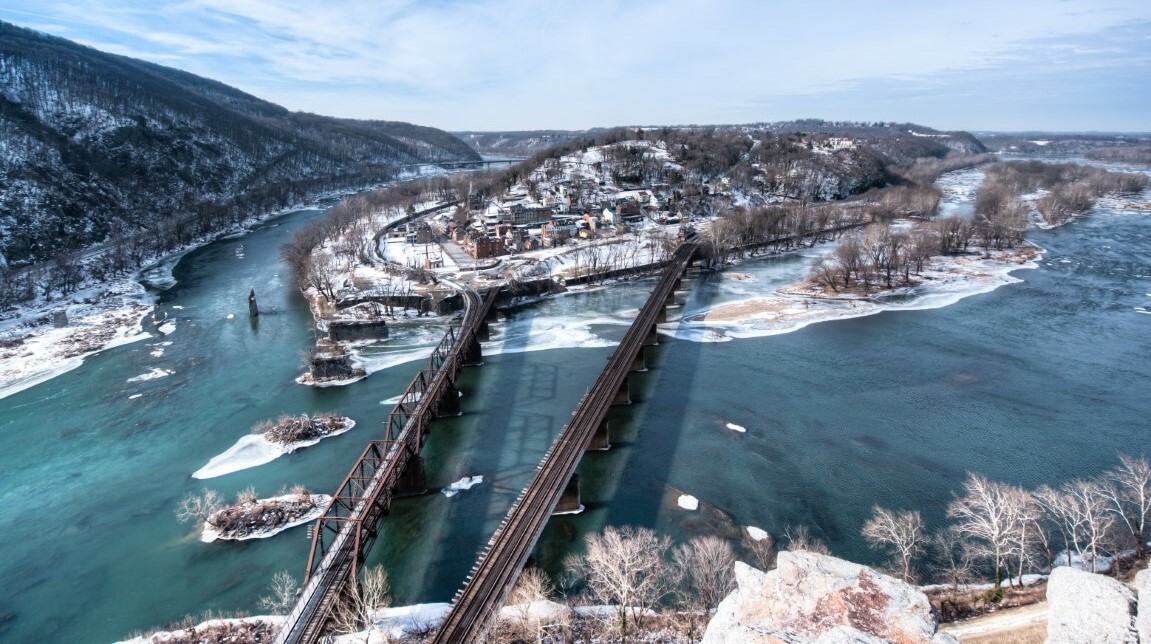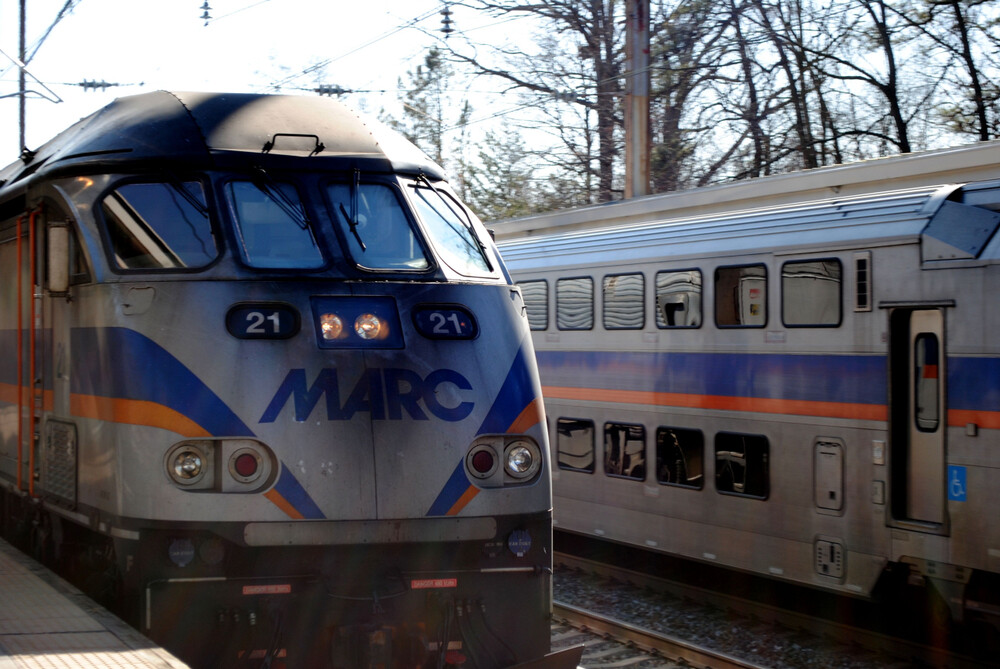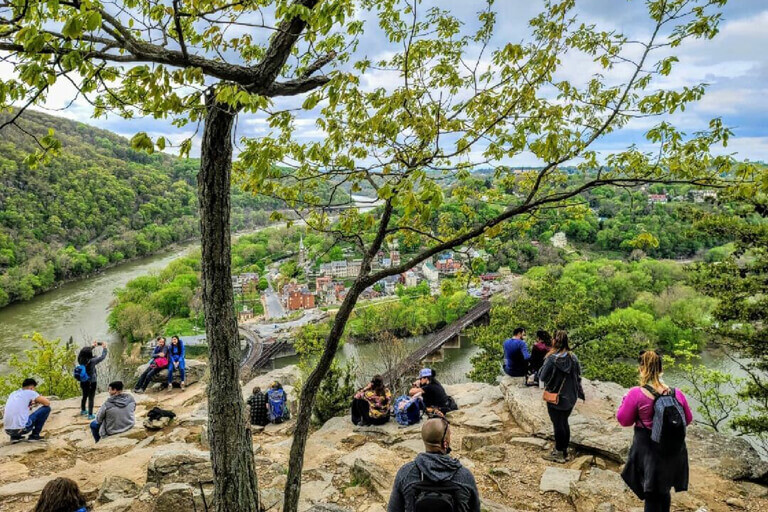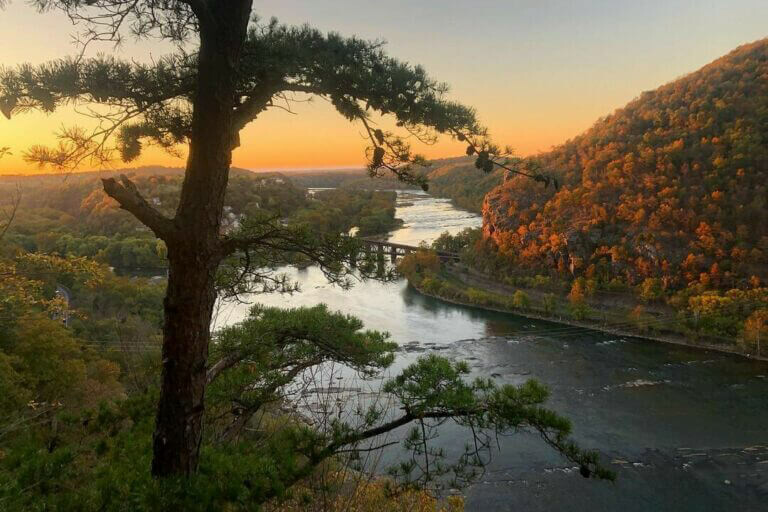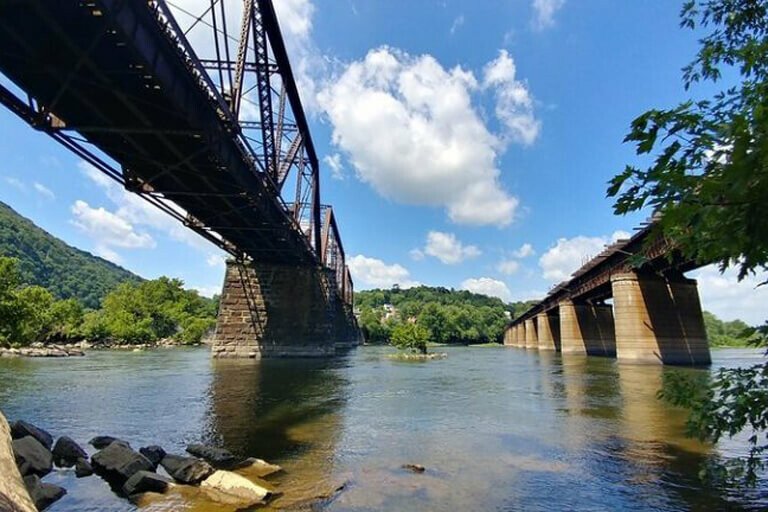If you are planning a trip to West Virginia, the Harpers Ferry National Historical Park is a must-see. Few places mix fun, nature, and educational experiences in the same way as Harpers Ferry.
Staying within the national historical park will give you a unique chance to immerse yourself in the surrounding nature and air of bygone days. At our modern cabins, you’ll get to see a side of Harpers Ferry National Historical Park that most only dream of: under the quiet blanket of stars. Guests boast about never sleeping quite so soundly when you remove noise and light pollution from the mix and instead get a heaping dose of comfort.
Let’s find out more about this incredible historic park…
Where is Harpers Ferry National Historical Park?
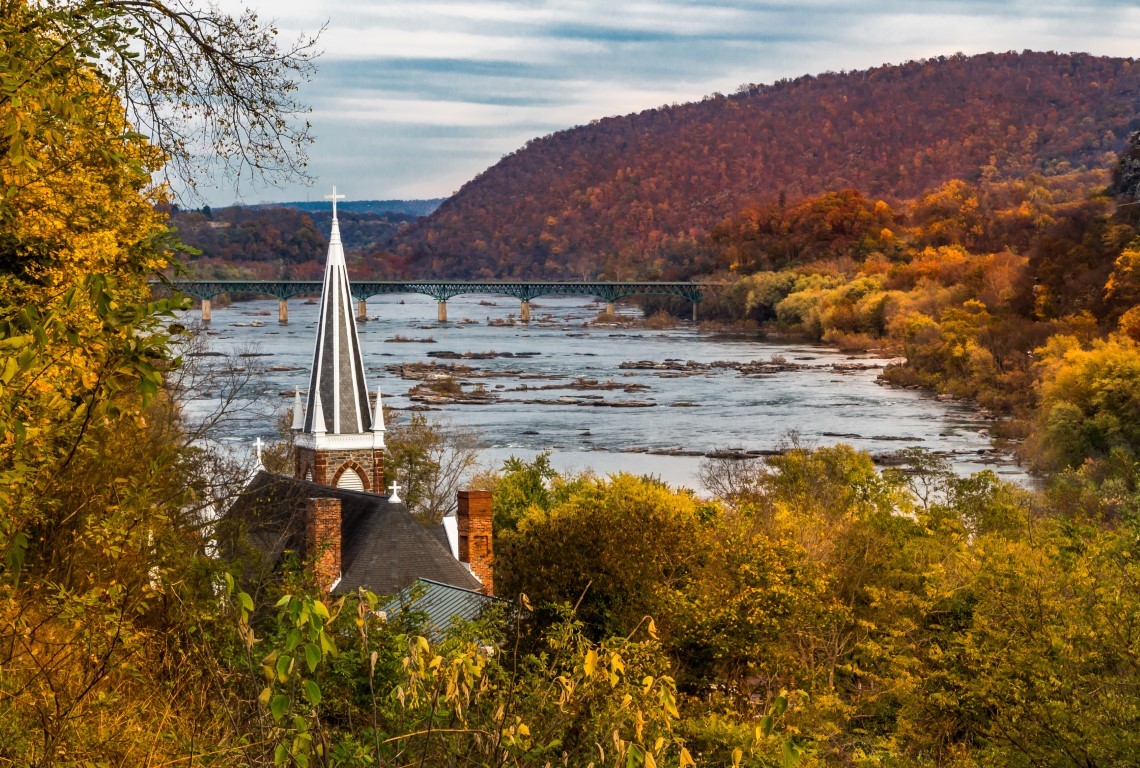
People sometimes confuse the thriving town of Harpers Ferry with the historical park. The Harpers Ferry National Historical Park is located in West Virginia, Maryland, and Virginia. The park is at a confluence of the Potomac River and Shenandoah Rivers rivers and also happens to be where these three states meet. The picturesque town of Harpers Ferry is in West Virginia and is part of the historical park. Both offer unique experiences and the chance to get a taste of history.
Some people travel to the area specifically to see the natural sites or as an add-on to a longer trip to Washington, D.C., the Appalachian Trail, Virginia, and West Virginia. If you visit the Harpers Ferry National Historical Park we encourage you to invest at least a few days. With a park this large, it will be a challenge to walk each trail or explore each section within one day.
How to Get in Touch
For further information, live park updates, or a chance to support the park by donating to the non-profit organization that maintains it, see the following contact details:
- Website: https://www.nps.gov/hafe/index.htm
- Social media (for park updates): https://www.facebook.com/harpersferrynps/
- Physical address: 171 Shoreline Dr, Harpers Ferry, WV 25425
- Postal address (for donations to the non-profit supporting the park): Harpers Ferry National Historical Park, National Park Service, PO Box 65, Harpers Ferry, WV 25425
- Phone: 304 535-6029
History Of Harpers Ferry National Historical Park
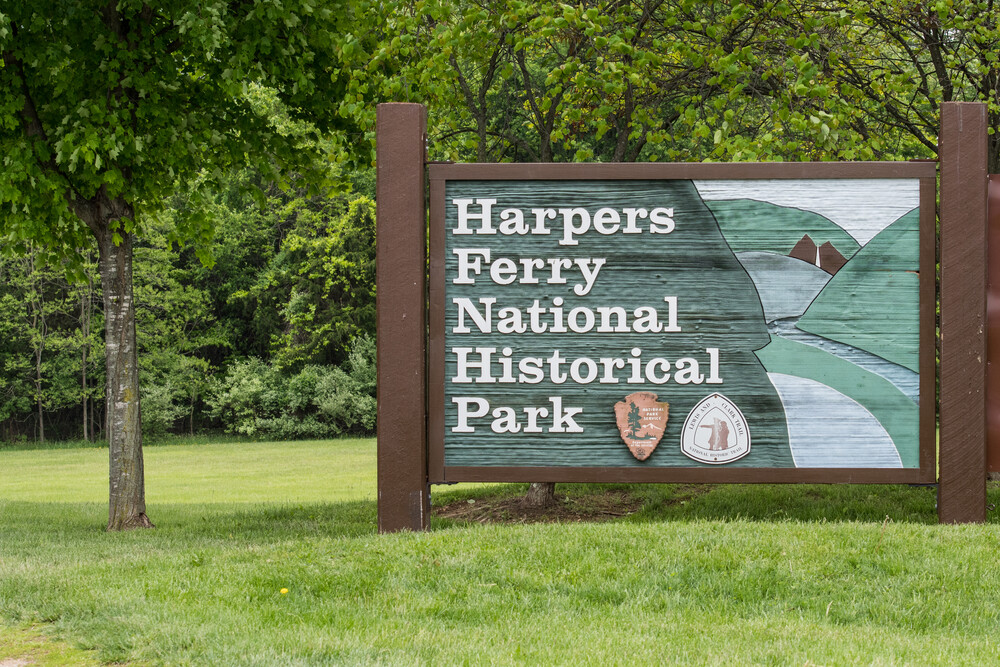
To better appreciate the appeal of this park, it helps to understand the park’s origins in United States history. The following events are considered to be of most significance to the park and the town of Harpers Ferry itself.
Official Formation
The Harpers Ferry National Historical Park was officially formed through an Act of Congress in 1963. Before that, it had been a national monument since the 1940s.
A historical site typically commemorates just one specific part of history. On the other hand, the designation of a historical park honors multiple events, people, or places. As its status as a historical park indicates, Harpers Ferry Park is home to a rich and complicated history. This site is connected to many icons of American history. The history stretches back to the indigenous tribes that originally inhabited the area as early as 1200 B.C.
Visits by the Founding Fathers
Founding Fathers George Washington and Thomas Jefferson are connected to Harpers Ferry. Thomas Jefferson visited while exploring the passage of the Patowmack Canal through the Blue Ridge, and George Washington founded the armory and arsenal in 1794.
Under a government contract, Meriwether Lewis got some of the hardware and weaponry needed for the Lewis and Clark Expedition from the armory in Harpers Ferry. He also contracted local skilled tradesmen, including local blacksmiths who built a collapsible iron boat frame used during the expedition.
A Catalyst to the American Civil War
Harpers Ferry may be most famous as the site of one major event that many believe helped to spark the American Civil War. Abolitionist John Brown staged a raid at the National Armory and Arsenal at Harpers Ferry. At the same time, he also unsuccessfully attempted to incite a slave rebellion. His goal was to arm enslaved people using weapons from the armory. After the raid failed, John Brown was tried for treason, convicted, and sentenced to death in nearby Charles Town, WV.
Harpers Ferry played an important role in the American Civil War. Less than a day after Virginia resigned from the Union, union soldiers set fire to the Armory and Arsenal in 1861, destroying over 15,000 weapons. It went on to be the site of several significant Civil War battles.
The Battle of Harpers Ferry
The Battle of Harpers Ferry happened in September 1862. During this battle, Robert E. Lee led the Army of Northern Virginia into Maryland. Meanwhile, he ordered another group of his army led by Thomas Jonathan ‘Stonewall’ Jackson to capture and hold the garrison at Harpers Ferry so they could secure a supply line. This battle led to the capture of 12,500 Union soldiers which was the largest number during the entire Civil War.
The area that is now part of the Harpers Ferry National Historical Park changed hands more than eight times during the Civil War. The Union troops occupied Harpers Ferry in July of 1861 and held it until August. Both sides paid so much attention since the area held strategic importance, though neither side found it easy to defend their position.
The Emancipation of Frederick Douglass
Another historical figure with connections to Harpers Ferry is Frederick Douglass. He was born enslaved in Maryland and later emancipated himself and rose to fame as a best-selling author, activist, and orator. Douglas had met with Brown at least a couple of times before the Harpers Ferry raid. Years later, in 1881 Douglas visited Harpers Ferry to speak at Storer College.
Frederick Douglas once referred to Harpers Ferry as the place where the “end of American slavery began.” The founding of the historically black college Storer College was notable in American history post-slavery. The college operated between 1867 and 1955 and changed over the years but remains known as a landmark in the US Civil Rights Movement.
Exploring Harpers Ferry National Historical Park
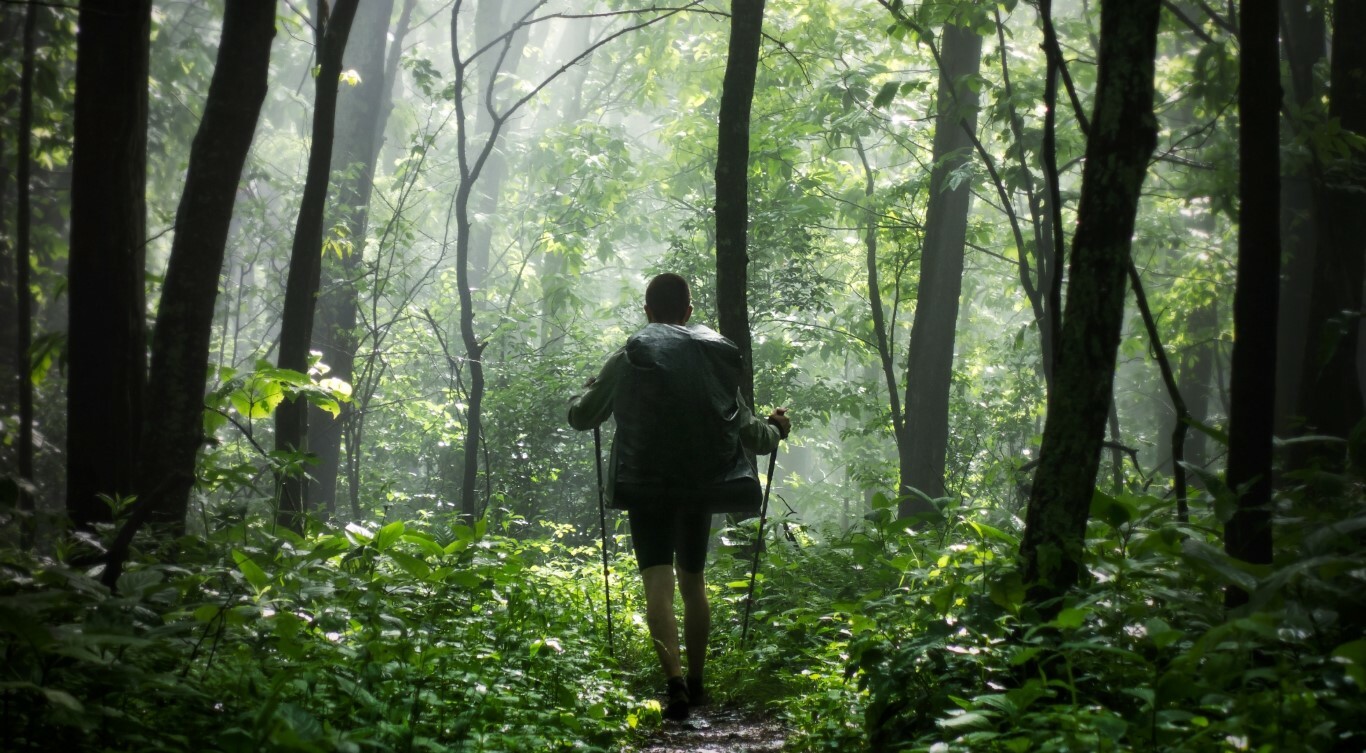
The park’s natural beauty draws people who enjoy outdoor recreation like hiking, cycling, climbing, and fishing. With such a large park, it helps to break it into areas.
Harpers Ferry Visitor Center
If you need additional information about the park, visit the park’s Visitors Center. The park rangers may answer questions and provide tips. The center includes other amenities, including public restrooms, drinking water, a shuttle bus stop, maps, bicycle racks, and parking lots.
If you plan to picnic, be aware that it is next to the park’s designated picnic area. Picnicking isn’t allowed in any of the historic preservation zones. To make your picnic extra special, consider visiting the historic town of Harpers Ferry to stock your picnic meal.
The visitors center offers access to the Lower Town trail and Murphy-Chambers Farm trails. The Lower Town trail is a moderate 1.6 mile trail, but if you prefer not to hike you may catch a free shuttle bus from the visitors center to Lower Town. Shuttle bus hours change seasonally and can be found on the park website.
Lower Town
You can get to Lower Town from the Visitor’s Center either by taking the shuttle bus or following the moderate 1.6-mile hiking trail. You may also park at the Harpers Ferry train station, though this parking lot fills up quickly on busy weekends.
In Lower Town, you may explore historic buildings such as a blacksmith’s shop, boarding house, John Brown’s fort, Provost Marshal’s Office, and the St. Peter’s Roman Catholic Church. Visit the Restoration Museum to learn about the techniques used to recreate the experience.
John Brown’s Fort was built in 1848 and, over the years, was used as a guardhouse by the Harpers Ferry Armory and a firehouse. Its current name comes from John Brown’s raid on the armory in 1859.
From Lower Town, you can join access many trails, including:
- Maryland Heights trail
- Loudoun Heights trail
- Camp Hill and the Appalachian National Scenic Trail
- Virginius Island and Hall’s Island trails
- Chesapeake & Ohio Canal National Historical Park towpath.
Murphy-Chambers Farm Trail
The Murphy Chambers Farm trail is an easy 1.3-mile trail leading to scenic views of the Blue Ridge Mountains and the Shenandoah River as well as Civil War cannons and fortifications that were made from dirt.
A site associated with the Battle of Harpers Ferry is found on the Murphy-Chambers Farm Trail. In 1848, Edmund H. Chambers purchased the farm, but the Union confiscated it in 1862.
Maryland Heights Trail
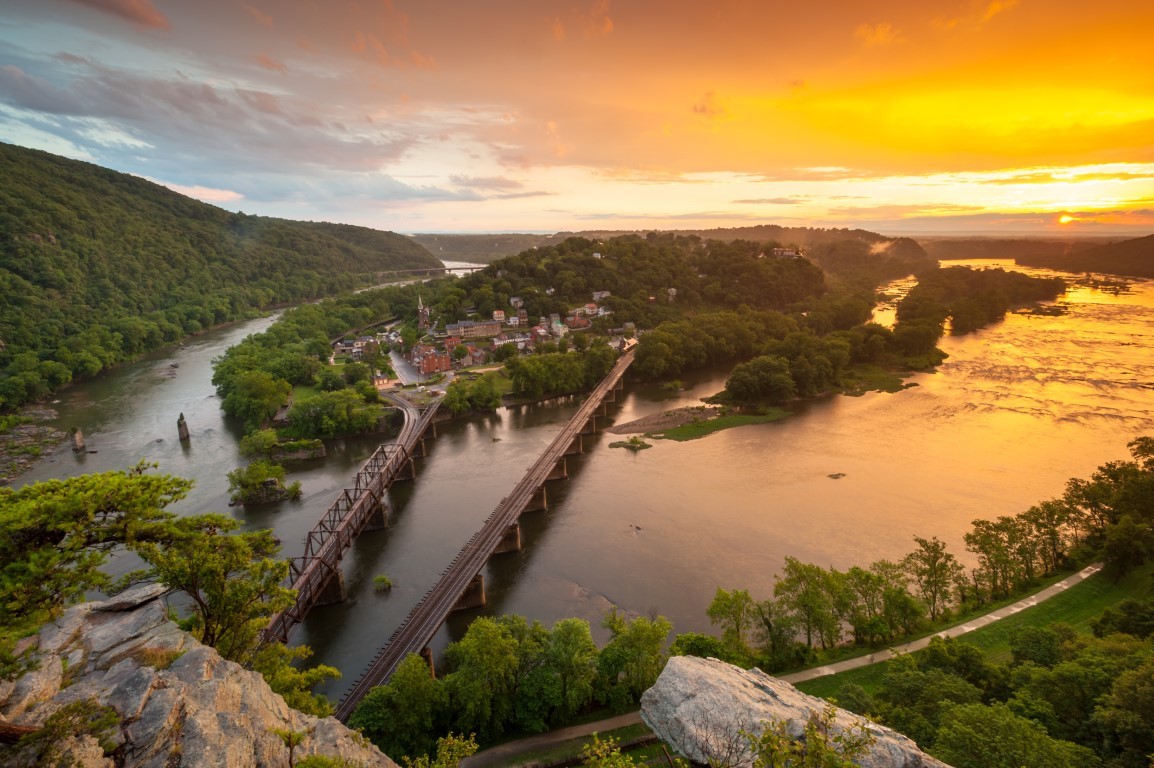
Maryland Heights is the most popular trail in the park, and for good reason. There are multiple variations of the hike making it either a moderate 4.5 mile hike or a more strenuous 6.5 mile hike. It’s well worth it for visitors who want to see as much of the Harpers Ferry National Historical Park as possible from just one trail. See sites significant to the Civil War and American industrial transportation history. The Naval Battery and a Civil War Stone Fort are among the highlights.
Loudoun Heights Trail
This 7.5-mile trail is both scenic and challenging. Enjoy views of the Potomac and Shenandoah rivers, phyllite and quartzite rock formations, and the surrounding Appalachian mountains.
Camp Hill And The Appalachian National Scenic Trail
As the name suggests, this 2-3 mile trail offers more views of the surrounding mountains. Other highlights include Jefferson Rock, Lockwood House, Harper Cemetery, and the Storer College Campus.
If you want to take a deep dive into history, then don’t miss the Appalachian Trail Conservancy Visitor Center. Also, take advantage of the chance to refill your water bottle, purchase drinks, or use the public restrooms.
The Camp Hill neighborhood also offers street parking along Washington Street, a common place to park if the train station lot is full and you prefer not to use the shuttle bus from the visitor center.
Virginius Island And Hall’s Island Trails
The trail is an easy 2-mile route that brings you through a beautiful river forest landscape, turbine, waterworks ruins, and the site of John Hall’s Rifle Works. As mentioned earlier, John Hall was an innovator who pioneered machine manufacturing. You can leave the crowds behind on this underrated trail.
Chesapeake & Ohio Canal National Historical Park Towpath
The 184.5-mile long towpath runs along the C&O Canal between Georgetown, Washington D.C., and Cumberland, MD. Visitors enjoy biking, running, or hiking along parts of the trail. The canal trail is particularly popular with cyclists not only because of its almost endless scenic views of the Potomac but also because the stone dust path makes for such a nice cycling surface.
Bolivar Heights Trail
These easy 0.3-2.4 miles of trails give you some of the most easily accessible views of the Blue Ridge Mountains and Shenandoah Valley. Those interested in Civil War history often find this a great place to survey the terrain and ponder which strategies may have been used. Other highlights include a view of the School House Ridge and Civil War-era cannons.
School House Ridge
The School House Ridge trails may be split into the North Ridge trail and the South Ridge trail. The northern trail is a moderate 2.1 miles offering the chance to see Civil War sites including canons. The southern trail is a moderate 2.5-mile trail passing through farm fields, glade views, Flowing Springs Run, and Civil War cannons.
Other Things to Do While Visiting Harpers Ferry
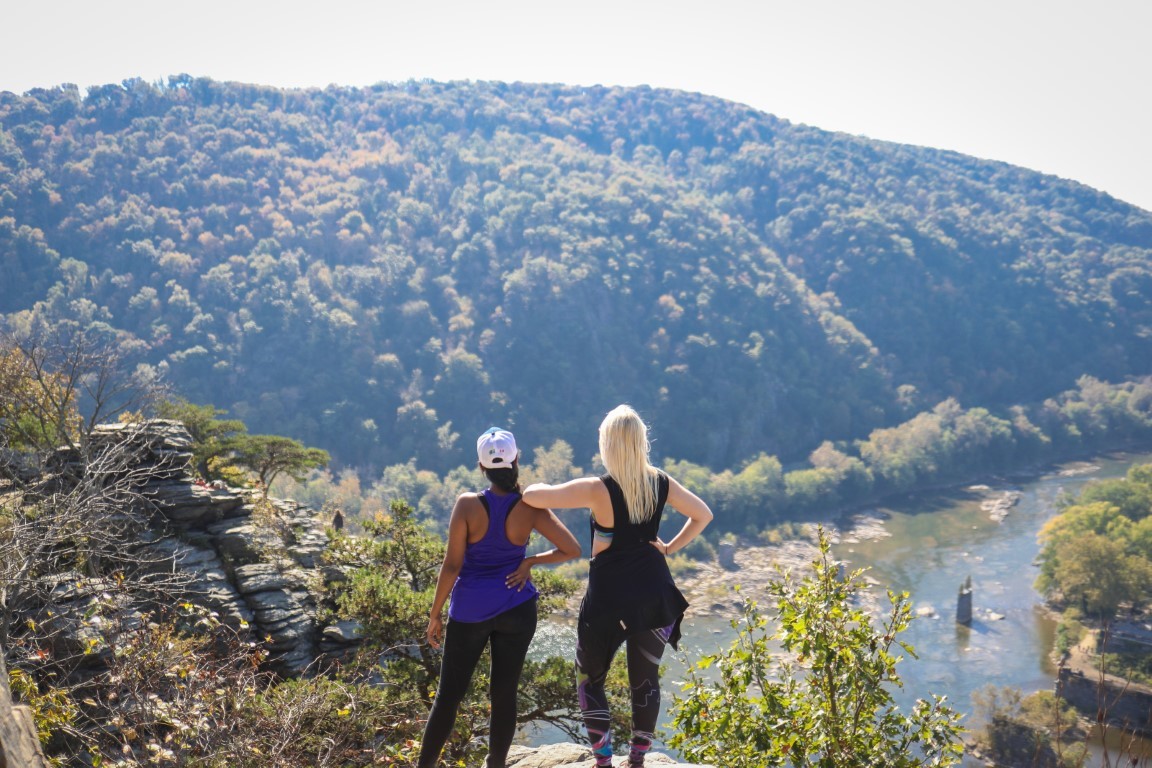
The National Park area and beyond is home to a wide range of fantastic outdoor recreational activities where locals and visitors enjoy spending time enjoying nature. Harpers Ferry is also known as a historic place, so there’s plenty on offer for history buffs, too.
If you enjoy outdoor recreation, you have ample opportunities to indulge at the Harpers Ferry National Historical Park.
Hiking
Explore the park’s 22 miles of hiking trails. According to the National Park Service, the trails include an easy riverside walk, a four-mile journey exploring historic battlefields, and a more advanced eight-mile mountain-top hike. In addition, keen hikers may enjoy access to other Appalachian Trail routes.
Biking
If you enjoy cycling, it is a great way to get around Harpers Ferry Historic Park. Be sure to review the park’s guide for policies and recommended trails. Plus, you have easy access to 180+ miles of excellent cycling on the C&O Canal trail.
Climbing
Avid climbers enjoy climbing the cliff facing Harpers Ferry National Historical Park. It’s considered one of the best climbing destinations in the area.
Fishing
Fishers may obtain permits to fish for largemouth bass, smallmouth bass, channel catfish, bluegill sunfish, and walleye. If you hope to go fishing, first acquire a license through the West Virginia Department of Natural Resources.
Picnicking
If you want to get a bite to eat, consider visiting one of the area’s restaurants just outside the park’s boundaries or pack a picnic. The designated picnic area is adjacent to the Visitor’s Center, which includes 14 picnic tables, including some in the shade.
Exploring Downtown Harpers Ferry

The town of Harpers Ferry, West Virginia is well worth a visit. Downtown is a picturesque town with many 19th-century buildings earning its designation as a National Historic District by the National Register. Browse the unique boutiques and galleries, grab a bite at one of the unique restaurants, or attend one of the many cultural events.
Several museums in Harpers Ferry cover various topics including American history, African-American history, the Civil War, transportation, and industry — they are must-visits for anyone interested in history.
Get to Know One of the Most Historic Sites in America
As you can see, Harpers Ferry National Historic Park is a fascinating place to visit. The natural landscape is captivating and the area’s unique history is a draw in and of itself. Now that you know everything there is to know, all that’s left to do is to book a cozy vacation cabin for your trip.

